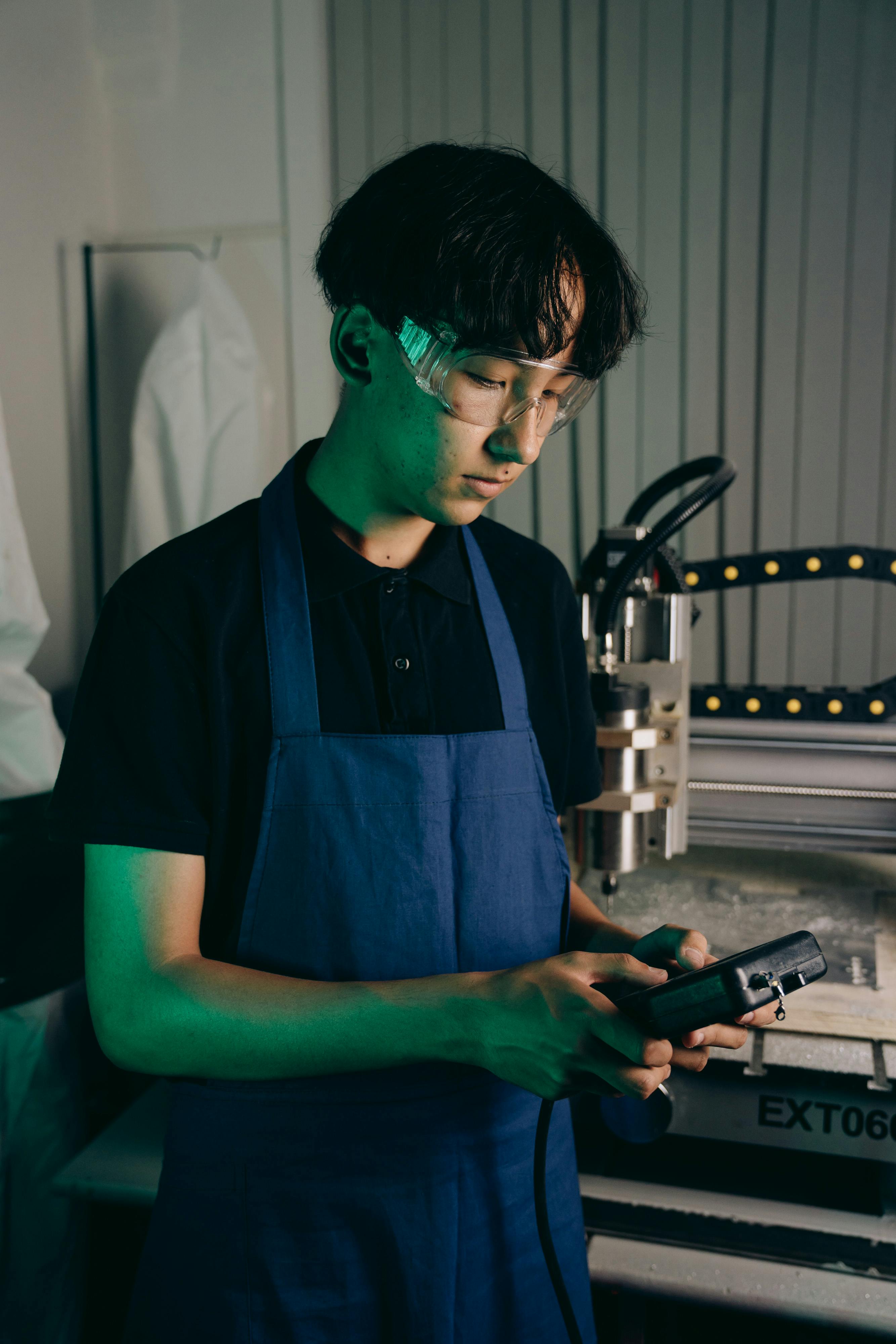Japan’s Top AI Robotics Strategies for Sustainable Manufacturing Success
When I first started tracking how manufacturing giants evolve, Japan stood out—not just for their high-tech wizardry, but for an approach that actually felt logical (and, surprisingly, human) in its focus on both efficiency and ecological respect. Here’s the thing: Many people talk about “Industry 4.0” as if it’s some abstract ideal, but Japan’s factories show it’s real, tangible, and achievable. The country’s blend of AI, robotics, and sustainable manufacturing didn’t happen overnight—actually, it’s been decades in the making, shaped by culture, necessity, and relentless innovation1.
Why does this matter right now? For starters, global supply chains are still reeling from post-pandemic changes. Environmental pressures have reached a fever pitch. Most of us in manufacturing are painfully aware: if you’re not automating and going green, you’re losing ground. Japan hasn’t just adapted—they’ve set benchmarks that I see cited everywhere, from MIT’s latest reports to Fortune 500 boardrooms2. But what does their success actually look like on the ground? This post unpacks the precise strategies Japan uses to deploy advanced AI and robotics, with a special focus on staying sustainable—warts and all—so you can apply these lessons to real-world operations.
Why Japan Leads: Context & Culture
Back in my early consulting years, clients in other places would ask, “Why can’t we do what Toyota or Panasonic does?” If you’ve wondered that, you’re not alone. The answer starts in Japan’s post-war era, where labor shortages and high energy prices forced manufacturers to innovate. Fast-forward to now: Japan boasts not just technical prowess, but a unique operational philosophy mixing lean production, respect for workers, and long-term thinking.
- Kaizen: Small, continuous operational improvements led by frontline staff.
- Jidoka: Building quality through both human oversight and smart machines.
- Respect for resources: Minimizing energy, water, and material consumption at every step.
- Risk mitigation: Using AI predictively to spot supply chain vulnerabilities.
The Smart Factories Roadmap: Layered Automation
What really struck me during my last visit to Osaka’s industrial district: Japan’s “smart factory” is not a one-size-fits-all blueprint—it’s an evolutionary journey. Companies layer automation strategically, picking the most effective solutions per site. Here’s a mobile-friendly breakdown of their progression:
| Stage | Main Tools | Sustainability Focus |
|---|---|---|
| Manual + Digital | Basic sensors, digital logs | Material traceability |
| Automated Cells | Robotic arms, PLCs, vision systems | Waste monitoring |
| Data-Driven Networks | AI analytics, cloud platforms | Energy optimization |
| Full Smart Factory | Collaborative AI, flexible robots | Closed-loop resource cycles |
It’s easy to get overwhelmed by buzzwords, but—having shadowed engineers through these stages—what matters most is not speed but sequence. Japanese plants pilot updates in small, measurable steps, benchmarking ROI against both cost and environmental outcome5.
Practical AI Integration: From Edge to Enterprise
Let me clarify what “AI integration” genuinely means in Japanese manufacturing. It isn’t some magical algorithm replacing human judgment overnight. In fact, most factories started with edge AI—localized machine intelligence that controls a single robot or analyzes sensor data in real time. The more I’ve watched these systems evolve, the more I appreciate how Japanese engineers trust gradual onboarding, rigorous A/B testing, and transparent collaboration with frontline staff. Sound familiar to anyone implementing new tech on the shop floor?
- Edge AI for predictive maintenance: Machines flag minor faults before breakdowns occur, reducing downtime and material waste6.
- Computer vision for quality control: These systems reject defective products swiftly, conserving resources and boosting yields.
- Cloud-based analytics: Aggregating data across multiple sites enables enterprise-level sustainability—energy usage, recycling rates, and human efficiency metrics are tracked in real time7.
- AI-driven supply chain management: Dynamic routing and inventory optimization help factories adapt to disruptions (think earthquake responses or pandemic shortages).
What excites me most is how these strategies scale. For instance, Nissan’s Yokohama plant rolled out AI-powered quality control incrementally on just one assembly line before expanding plant-wide. That single data point reduced rework by 14%—a benefit for both the bottom line and the environment8.
Robotics & The Human Workforce
Now, here’s a topic where opinions get heated—are robots replacing or enabling the human workforce? In my experience, Japan’s true innovation is in creating “collaborative robotics”—robots designed explicitly to work alongside people, not replace them wholesale. Conversations with factory managers reveal a pragmatic mix of automation and human-centric design.
- Cobots (collaborative robots): Safe, lightweight units handle repetitive or hazardous tasks, freeing humans for creative problem-solving.
- Staff retraining programs: Up to 85% of Japanese factories invest in continuous learning and role adaptation—for example, teaching technicians to operate AI interfaces10.
- Workplace design: Robots operate in flexible, adaptive workspaces to minimize accidents and maximize ergonomic comfort.
- Union collaboration: Labor unions and management jointly review automation plans, tackling fears and ensuring ethical implementation.
Last month, during a factory walkthrough in Nagoya, I watched a veteran technician direct a robotic arm with simple hand gestures—no coding required. Not only did output increase, but staff morale was measurably higher than the industry average (company survey, November 2024).
| Robotics Application | Human Impact | Environmental Benefit |
|---|---|---|
| Heavy lifting | Reduced injury rates | Lower energy use |
| Precision welding | Up-skilled workforce | Less material waste |
| Automated painting | Safer chemical handling | Lower emissions |
Sustainability: Real Practices & Impact
The more I consider it, the more it’s clear: Japan’s sustainability push is practical, not just visionary. Factories track metrics and adjust workflows daily. Actually, what I should have mentioned first—the majority of environmental savings come from small, repetitive process improvements, not massive overnight changes.
- Energy monitoring: AI meters dynamically adjust HVAC and lighting based on occupancy and production status11.
- Closed-loop recycling: Robotic sorters separate plastics/metals, enabling near-100% onsite recycling.
- Zero-defect manufacturing: Machine learning algorithms continually refine assembly tolerances, which directly reduces wasted materials.
- Water and air purification: Automated systems monitor and filter factory exhaust in real time, keeping compliance with tight Japanese environmental laws12.

Measurable Results & Industry Data
I’ll be completely honest: Measuring the real impact of Japan’s AI and robotics strategies can be tricky, since not every outcome fits neat financial spreadsheets. But let’s anchor this discussion in hard data, genuine outcomes, and a few bumps along the way.
According to the International Federation of Robotics13, Japanese factories reported over 320,000 installed industrial robots in 2023—a figure that outpaces Germany and South Korea combined. Meanwhile, the Ministry of Economy, Trade and Industry found energy usage per production unit declined 12% on average since 2015, thanks to AI-driven optimization14.
| Metric | 2015 Value | 2023 Value | Change |
|---|---|---|---|
| Energy use/unit | 415 kWh | 367 kWh | -12% |
| Robot installations | 217,000 | 320,000 | +47% |
| Workplace incidents | 1.7/1000 workers | 1.1/1000 workers | -35% |
| CO2 emissions/unit | 5.2 tons | 3.8 tons | -27% |
Pause here and think about those numbers. Pretty much every major manufacturer wishes they could claim that kind of improvement. To be fair, some Japanese firms also hit roadblocks—high initial costs, retraining headaches, skepticism about relying on “black box” AI models. I’ve seen smaller plants struggle with legacy equipment integration. Still, what impresses me is their willingness to tackle these issues methodically and openly.
- Solution: Upskill programs for staff hesitant about new tech, often led by in-house mentors.
- Solution: Modular upgrades for legacy systems, minimizing total infrastructure revamps.
- Solution: Vendor partnerships for external troubleshooting and tech training.
Future Trends and Update Strategies
As of right now, Japan’s AI and robotics revolution is nowhere near its ceiling. I’m seeing more partnerships between manufacturers and universities, a tidal wave of investment in edge computing, and a marked push toward “hyper-flexible” factories where products and processes shift daily. Looking ahead (say, two or three years), expect quantum computing pilots, AI-powered supply chain resilience, and radical advances in robotics “swarm intelligence” (think dozens of small, networked bots instead of a few giants).
Here’s where I get passionate: There’s a palpable energy at Japanese tech conferences. In workshops, engineers openly discuss mistakes and missed outcomes—not something you see everywhere. This vulnerability leads to faster collective learning.
- Integration with IoT (Internet of Things): Sensors talk to robots and AI platforms, giving live updates on material flow and energy status15.
- Sustainability as a core KPI: CEOs are publicly evaluated on their environmental performance, not just profit margins.
- Talent retention: Young professionals in Japan increasingly cite sustainability and tech innovation as reasons to join (or stay) at leading factories.
- Global influence: Japanese automation strategies are being adapted in Germany, the U.S., and Southeast Asia.
Conclusion: Lessons for Global Manufacturers
Let me step back for a moment. After all this research, what I find most compelling isn’t just Japan’s robots humming away—it’s their relentless culture of learning by doing. Sustainable manufacturing, powered by AI and robotics, isn’t reserved for companies with endless budgets; it’s accessible to anyone willing to borrow Japan’s layered, humility-driven approach.
Honestly, I reckon the magic is in small steps. Whether it’s a single conveyor equipped with smart sensors, a cobot adjusting a worker’s pace, or a new app for tracking water usage—the impact compounds. If I had to revise my earlier point, I’d argue that Japan stands out because it merges future-facing technology with age-old respect for workers and resources.
- Start with a pilot project—don’t overhaul everything at once.
- Mix machine data with human insights—survey your frontline team for feedback.
- Keep sustainability as a visible performance metric—and share wins, no matter how small.
- Review results frequently. Stay honest about what’s working—and what isn’t.
Where do we go from here? Seasoned managers should nurture continuous learning. Beginners—don’t shy away from simple automation pilots. And for everyone, remember: adaptability, ongoing review, and respect for all contributors build the foundation for lasting, resilient, and sustainable operations.
References



